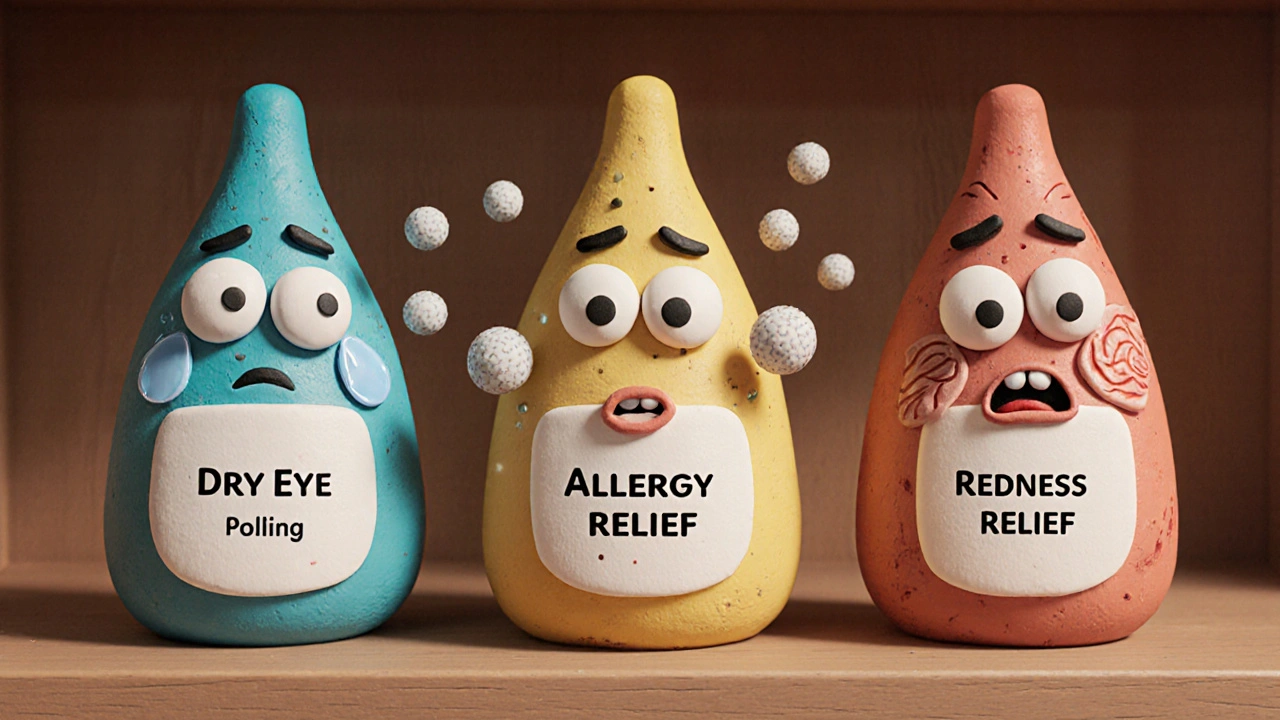Redness Eye Drops: What Works, What to Avoid, and How to Use Them Safely
When your eyes turn red, it’s natural to reach for a bottle of redness eye drops, over-the-counter eye drops designed to reduce visible blood vessel dilation in the whites of the eyes. Also known as ocular vasoconstrictors, these drops promise quick relief—but they don’t fix the root cause. Many people use them daily without realizing they’re masking symptoms, not treating the problem. If your eyes are red from allergies, dryness, or fatigue, a quick fix might feel great. But if you’re using them for weeks, you could be making things worse.
Not all redness is the same. dry eye treatment, products that replenish moisture and soothe irritated surfaces in the eye works differently than conjunctivitis drops, medications used to treat infection or inflammation of the eye’s outer membrane. Some redness eye drops contain tetrahydrozoline or naphazoline—chemicals that shrink blood vessels temporarily. That’s why your eyes look white right after you use them. But once the effect wears off, the blood vessels bounce back bigger than before. This is called rebound redness, and it’s why people end up using more and more drops over time.
What you really need depends on why your eyes are red. If you’re staring at screens all day, your eyes are probably dry—not infected. Artificial tears with no preservatives are safer than redness-relief drops. If your eyes itch and water, antihistamine drops might help. If you have discharge, crusting, or pain, you might have an infection that needs prescription treatment. Even something as simple as a contact lens that’s too old can cause redness. Most people don’t realize their drops are part of the problem.
There’s no one-size-fits-all solution. Some brands claim to be "natural" or "gentle," but if they contain vasoconstrictors, they’re still just masking symptoms. The best approach is to stop treating the redness and start treating the cause. That’s why the posts below cover real cases: how people fixed chronic redness by switching from redness eye drops to proper hydration, managing screen time, identifying allergens, or using the right prescription drops. You’ll find comparisons of popular brands, what’s actually in them, and why some are safe for occasional use while others should be avoided entirely. No fluff. Just what works, what doesn’t, and how to make your eyes feel better without creating a cycle you can’t break.
Learn how to pick the right over-the-counter eye drops for allergies, dryness, or redness - and avoid the common mistakes that make symptoms worse. Expert-backed choices for 2025.
Nov, 14 2025

